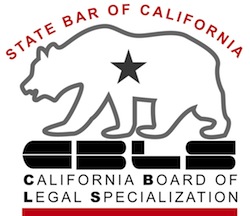“Your wages have been garnished, ” reads the letter from your employer.
Do nothing and twenty-five percent of your after-tax earnings will be sent to your judgment creditor.
So, do something: keep reading this action guide for Californians subject to a wage garnishment.
This guide has three parts:
- the short run guide for minimizing the hit to your income,
- the medium range attack on the judgment, and
- the long run look at the bigger picture of your personal finances.
Wage garnishment explained
A wage garnishment is a legal order that a creditor with a judgment against you can obtain from the court to collect on its judgment.
10 things you need to know about judgments
The existence of a judgment means that a court has already issued its order finding that your creditor is entitled to a sum of money from you to satisfy a debt.
If the system has worked as it’s supposed to, you should have been served with a copy of the complaint when it was filed.
Due process requires that before a judgment is entered, you get notice of the lawsuit and a chance to defend against it. Increasingly, these days, that doesn’t happen as it is supposed to. More about that in our discussion of medium range survival tactics.
California is among the majority of states that allow a judgment creditor to intercept your wages at the source, your employer, to collect on its judgment. Both federal law and state law impose a cap on how much of each paycheck the creditor gets. State law can protect more than the federal law does; it can’t protect less.
Here, we are looking at the garden-variety judgment for credit card debt or medical bills. There are different rules governing collection of taxes and support that we won’t deal with today.
1. Protect Your Paycheck From Garnishment
The wage garnishment entitles the judgment creditor to 25% of your paycheck, after mandatory deductions are subtracted. But that’s the maximum the creditor gets.
You get a chance to show that you need more than 75% of your earnings to support yourself and your dependents. Cal. C. of Civil Procedure 706.051.
But to exercise that chance, you’ve got to fill out a form. Are you game for that?
Claim exempt funds for support
With the notice of garnishment, you should have been served with a form to claim the exemption for money necessary for support. To claim the exemption in wages, you need to also complete the form financial statement.
Note that the financial statement asks for your monthly income. That’s easy if you are paid once a month, or twice a month. Watch out, though, if you are paid weekly or every two weeks. There are 4.3 weeks in a month. Figure your weekly income, then multiply by 4.3.
The claim of exemption and the financial statement get sent to the levying officer, not the court, and not your employer. That information is shown on the notice of levy. The back of the notice form has instructions for the judgment debtor; read them carefully.
Creditor can agree to allow exemption
The levying officer delivers your claim of exemption to the judgment creditor, who can accept your claim of exemption, or can request a hearing before a judge.
If a hearing is required, you will get a completed copy of the notice with the time and place of the hearing. It will look like this.
If there will be a hearing, you need to appear, with evidence in hand about other sources of income, if any; proof of your expenses; and any other documents that support your need for all or nearly all of your wages.
You can also negotiate directly with your creditor for some alternative way to pay the judgment.
2. Attack The Judgment
Wage garnishment is available only if a court has properly determined that you owe the money in question.
If you participated in the lawsuit, lost, and didn’t appeal, the matter is closed. It’s a done deal.
But if the judgment supporting the wage garnishment was news to you, if it was entered because you didn’t appear in the suit, you may have a chance to fight back.
California law allows you to move to set aside a judgment that was improperly entered. “Proper” here refers to the procedures involved, not the merits of the claim.
Grounds to set aside a default judgment include excusable neglect, lack of actual notice, or lack of subject matter jurisdiction.
Setting aside a judgment requires an understanding of the issue, attention to detail, and prompt action. Sit on your hands and you may be barred from available relief because you waited too long.
The Sacramento County Public Law Library has a great guide to setting aside judgments. If doing it yourself looks too difficult, a lawyer can help you.
Setting aside the judgment is probably only worth the effort if you have a defense to the substance of the lawsuit. It’s a lot of work if at the end of the day, you are still liable for the debt.
3. Assess Your Finances As A Whole
Your time and energy are precious commodities and come in limited supply. Before spending a passel of time and energy defending yourself from this judgment creditor, take a look at all your financial obligations.
Ask yourself: Will managing this debt leave me able to pay everyone else I owe money to?
If not, get some help looking at the big picture. Reputable credit counselors can help you with alternative payment plans.
I don’t recommend debt settlement schemes, however. The concept is appealing, but in practice, it seldom works to solve the entire problem.
Bankruptcy lawyers are experienced in looking at debts and assessing whether you can dig yourself out of a financial hole without the help of available bankruptcy laws. A bankruptcy filing stops a wage garnishment and usually eliminates your liability for the debt for all time.
Read more about bankruptcy and the alternatives.
Image: © Africa Studio – Fotolia.com






